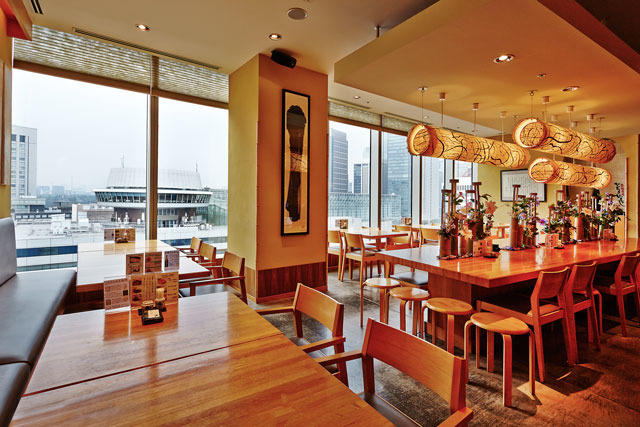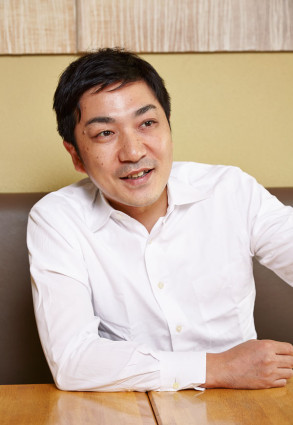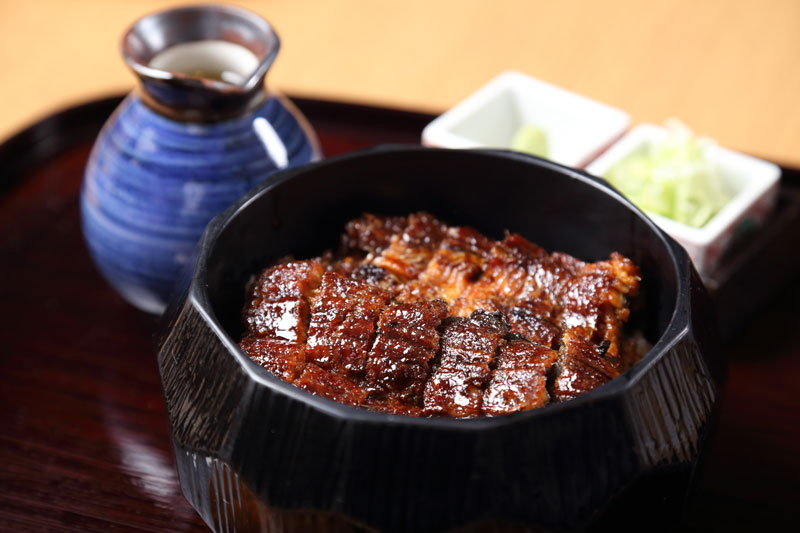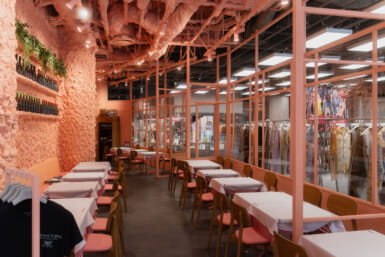We find out why one of Nagoya’s most celebrated “soul foods” could be the next Japanese culinary sensation.
By James K. Toda
“I had been working for a rather large restaurant group in Japan,” Takayuki Tsukii, Director of Hitsumabushi Bincho said quietly to Weekender. “So I was working at an Italian restaurant, but we also had French and Chinese restaurants in the group. But I was always sort of frustrated, because in Japan, for instance, Italian means pasta and pizza, more or less. That’s it. As you may know, there are 20 regions in Italy and each region has totally different dishes and different wines that complement them. No matter how much I tried to learn them, only one or two out of thousand Japanese people had any interest in my knowledge,” he sighed. “As long as you are in Japan, you won’t be able to get those Italian local vegetables and ingredients: therefore you cannot reach the level of a real Italian.”
Truth is, not many Japanese people who work for Italian restaurants think the way Tsukii does.
While he was facing this dilemma, Hiroshi Suzuki, president of the Nagoya-based Hitsumabushi Bincho franchise, was in the midst of plans to expand outside of Nagoya. Unagi, or eel, is a dish loved by many Japanese since ancient times as a food that both imparts stamina and is said to help keep your complexion healthy.
Suzuki wanted to open his first Tokyo location in Ginza. To him, Ginza represented the center of Tokyo, itself a central world city. His aim was to share this dish with a global audience. He wanted to produce an eel restaurant where they would serve champagne, and was looking for someone who understood both wine and restaurant management.
Introduced by a mutual friend, Suzuki met with Tsukii in Tokyo and talked about his Ginza plan. Following their first chats, Suzuki invited Tsukii to Nagoya, where the president himself cooked the famous unagi in Hitsumabushi Bincho’s signature style. While eel is often steamed in Japan, with Nagoya-style cooking, it is grilled, and the smoke and flames do the work. As the name of the establishment implies, at Hitsumabushi Bincho they only use the finest quality bincho charcoal, which is made from oak, giving the unagi extra flavor.
After it is cooked, the unagi is served as hitsumabushi, which is eaten in three different stages, each one highlighting a different aspect of the flavors and textures of the charcoal-roasted unagi. Tsukii was stunned by this simple, yet traditional preparation, which left an impression on him as his first experience of tasting real Nagoya-style unagi. He decided to leave the restaurant group for good. Suzuki teamed up with Tsukii to open the Ginza branch of Hitsumabushi Bincho in 2007. Ever since their opening, the number of customers increased so much that it is now advised to book ahead.
“Searching for real Italian food in Japan is a fabricated act,” Takayuki Tsukii said, “and here I found true, authentic cuisine. Most non-Japanese people are familiar with sushi and tempura. Unagi should come to the next position. But the difficulty in making it popular may lie in the fact that it’s one single bowl dish. I suppose Europeans are used to a lot of courses, especially when they eat out—for example, for an Italian course meal, you have antipasti, primo, secondo, salad, cheese and fruit, dessert, espresso. But we just serve just one bowl, and we have no closed private dining rooms. Just one open, very convivial space.”
Eel is not entirely foreign to European kitchens, and it used to be a common food in the US several generations ago. But, as Tsukii explains, what makes Japanese eel stand out is the cooking style that brings out its true flavor. “Europeans cook eel with a lot of oil. French people boil eel with red wine. That’s overcooking, in our opinion. We simply grill it without using any oil, making it very juicy on the inside but with a crispy, tasty skin outside.” Because the seemingly simple cooking style brings out unagi’s natural flavor, the technique of the chef is of primary importance: “The most important things are how you choose the unagi, how you grill it, and also your artisan spirit. Even two eels from the same species (Anguilla japonica—the Japanese eel) that were living the same pond and eating the same food will have completely different body compositions, if one was moving around and eating a lot, and the other was hardly eating and staying still. We adjust the flames and cooking temperature for each individual unagi. Combined with our secret home-made sauce, our kabayaki unagi dish is an culinary experience like no other, browned to just the right shade.”
The world has around 18 species of eel, and seasonal availability varies according to their species and place of origin. That’s why, instead of limiting themselves to a particular place of origin, Hitsumabushi Bincho procures eel from all over Japan, allowing them to serve eel that is always fresh, tasty, and at its seasonal peak, 365 days a year.
Hitsumabushi Locations in Tokyo:
Ginza
2-2-14 Ginza, Chuo-ku, Tokyo
Tel: 03-5159-0231 | Web: www.hitsumabushi.co.jp
Hours: Daily, 11:00–15:30 (Last order 15:00)
17:00–23:00 (Last order 22:00)
Tokyo Skytree
Tokyo Skytree Town, Solamachi 6F, 1-1-2 Oshiage, Sumida-ku, Tokyo
Tel: 03-5619-5757 | Web: www.hitsumabushi.co.jp | Hours: Daily, 11:00–22:00
Ikebukuro
Ikebukuro Parco Honkan 8F, Minami-Ikebukuro 1-28-2, Toshima-ku, Tokyo
Tel: 03-5956-5756 | Web: www.hitsumabushi.co.jp
Hours: Daily, 11:00–15:30 (Last order 15:00)
17:00–23:00 (Last order 22:00)
Outside of Tokyo
Nagoya:
Head Store | Tel: 0587-96-0141 | LACHIC | Tel: 052-259-6703 | Esca | Tel: 052-451-5557
Osaka:
Grand Front | Tel: 06-6371-5759
Fukuoka:
Nakasu Kawabata | Tel:092-409-6522











